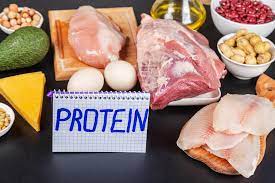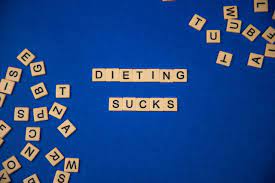Table of Contents
Introduction
Are you considering adopting a low-fat diet to improve your overall health and well-being? It’s important to understand the advantages and potential drawbacks before making a decision. In this comprehensive guide, we will explore the pros and cons of a low-fat diet and provide valuable insights to help you make an informed choice. Whether you’re aiming for weight loss, better heart health, diabetes management, or improved overall wellness, this article will equip you with the knowledge you need to embark on your low-fat diet journey.
1. The Benefits of a Low-Fat Diet
A low-fat diet offers several advantages for those seeking to improve their health and well-being. Let’s explore the various benefits in detail:
1.1 Weight Loss and Balanced Nutrition
One of the primary advantages of a low-fat diet is its potential for weight loss. By reducing fat intake, you create a calorie deficit that promotes shedding excess pounds. However, it’s important to ensure that your low-fat diet emphasizes nutrient-rich foods for balanced nutrition. Include a variety of vegetables, fruits, whole grains, lean protein sources, and low-fat dairy products in your meals. These foods provide essential vitamins, minerals, and dietary fiber necessary for overall health.
1.2 Heart Health and Cholesterol Control
Maintaining a healthy heart is crucial, and a low-fat diet can significantly contribute to heart health by reducing cholesterol levels. Focus on consuming foods low in saturated and trans fats to lower the risk of cardiovascular diseases. Opt for lean meats, fish, fruits, and vegetables as part of your low-fat diet. Additionally, incorporate monounsaturated fats found in olive oil, avocados, and nuts for their cardiovascular benefits. Don’t forget to include omega-3 fatty acids, which can be obtained from fatty fish like salmon and walnuts, as they further promote heart health.
1.3 Diabetes Management and Blood Sugar Regulation
If you have diabetes, a low-fat diet can play a vital role in managing your blood sugar levels effectively. Emphasize lean proteins, fruits, vegetables, and whole grains to maintain stable blood glucose levels. Working with a healthcare professional or a registered dietitian is essential to creating a personalized low-fat diet plan tailored to your specific needs. Weight management is also crucial for diabetes management, and a low-fat diet can support weight loss or weight maintenance.
1.4 Blood Pressure Control and Cardiovascular Health
Controlling blood pressure is important for preventing cardiovascular diseases. A low-fat diet, combined with other healthy lifestyle habits, can help maintain optimal blood pressure levels. Include fruits, vegetables, whole grains, low-fat dairy products, and lean meats in your meals to provide essential nutrients and support healthy blood pressure levels. Following the Dietary Approaches to Stop Hypertension (DASH) diet, which is low in saturated fat and high in fiber and potassium, can be particularly beneficial.
1.5 Improved Digestive Health
A low-fat diet can promote better digestive health by reducing the risk of digestive disorders such as gallbladder or pancreatic disease. If you have difficulty digesting or absorbing fats, a low-fat diet may be easier to tolerate. Additionally, incorporating fiber-rich foods like fruits, vegetables, and whole grains supports healthy digestion and prevents constipation. Aim to include these foods in your low-fat diet for optimal digestive health.
1.6 Increased Energy Levels
Consuming a low-fat diet can contribute to increased energy levels. Fats take longer to digest, while carbohydrates and protein are more readily absorbed. By reducing fat intake, you allow for quicker digestion and absorption of nutrients, providing you with more readily available energy for your daily activities and exercise routines.
1.7 Reduced Inflammation
Certain types of fats, particularly saturated and trans fats, can promote inflammation in the body. By opting for a low-fat diet that focuses on healthier fats, such as monounsaturated and polyunsaturated fats, you can help reduce inflammation levels. This may have positive effects on overall health, including a decreased risk of chronic diseases associated with inflammation.
2. The Drawbacks of a Low-Fat Diet
While a low-fat diet offers numerous benefits, it’s important to be aware of potential drawbacks. Let’s explore the disadvantages in more detail:
2.1 Potential Nutrient Deficiencies
Restricting fat intake may increase the risk of certain nutrient deficiencies. Fat plays a crucial role in the absorption of fat-soluble vitamins, such as vitamins A, D, E, and K. When following a low-fat diet, it’s important to ensure you obtain these vitamins through alternative sources, such as fortified foods or supplements. Incorporating foods rich in these vitamins, such as leafy greens, dairy products, and fatty fish, is also beneficial.
2.2 Difficulty in Sustaining Long-Term Compliance
One challenge of a low-fat diet is the difficulty in sustaining long-term compliance. The strict restriction on fat intake may lead to feelings of deprivation or dissatisfaction, making it challenging to adhere to the diet consistently. To overcome this, focus on creating a well-rounded meal plan that incorporates a variety of flavors and textures, and consider seeking support from a registered dietitian or nutritionist.
2.3 Limited Flavor and Culinary Options
Reducing fat intake may result in limited flavor and culinary options, as fats contribute to the taste, texture, and richness of many foods. Without the presence of fat, some dishes may feel less satisfying or enjoyable. However, with creativity and the use of herbs, spices, and other flavor-enhancing ingredients, it is possible to create delicious low-fat meals. Experiment with different cooking techniques and seasonings to add depth and flavor to your dishes.
2.4 Impact on Fat-Soluble Vitamins
As mentioned earlier, fat is essential for the absorption of fat-soluble vitamins. A low-fat diet may limit the body’s ability to absorb these vitamins effectively. To mitigate this, focus on incorporating a variety of nutrient-dense foods into your diet, including those rich in fat-soluble vitamins. Additionally, consider talking to a healthcare professional or registered dietitian about appropriate supplementation to ensure you meet your vitamin needs.
2.5 Effect on Satiety and Hunger Levels
Fats play a role in promoting satiety and regulating hunger levels. Due to their higher calorie density, fats can help you feel fuller for longer periods. When following a low-fat diet, you may experience increased hunger and a need for more frequent meals or snacks to maintain satiety. To address this, focus on incorporating other satiating nutrients, such as fiber and protein, into your low-fat meals. This can help keep you feeling satisfied between meals.
Adhering to a low-fat diet may present challenges in social situations, such as dining out or attending gatherings. Many social events often feature high-fat foods, and following a low-fat diet may require careful planning and communication with hosts or restaurants. To navigate these situations, consider informing your friends and family about your dietary preferences in advance or suggest alternative options that align with your goals.
2.7 Individual Variations and Personal Preferences
Every individual is unique, and what works well for one person may not be suitable for another. Personal preferences, cultural backgrounds, and individual metabolic differences should be taken into consideration when deciding on a dietary approach. It’s important to listen to your body, experiment with different eating styles, and find a diet plan that aligns with your specific needs and preferences.
3. Finding the Right Balance
To make the most of a low-fat diet while addressing potential drawbacks, finding the right balance is essential. Consider the following strategies:
3.1 Personalizing Your Diet Plan
Work with a registered dietitian or healthcare professional to personalize your low-fat diet plan. They can provide guidance based on your specific health goals, dietary requirements, and individual preferences. A customized approach will ensure that your nutritional needs are met while adhering to a low-fat framework.
3.2 Incorporating Healthy Fats
While a low-fat diet emphasizes reduced fat intake, it’s important to include small amounts of healthy fats in your meals. Opt for sources of unsaturated fats, such as avocados, nuts, seeds, and olive oil. These healthy fats offer numerous benefits and can contribute to a well-rounded diet. Remember that moderation is key when incorporating fats into your low-fat eating plan.
3.3 Monitoring Nutrient Intake
Pay attention to your overall nutrient intake and ensure you’re meeting your daily requirements for essential vitamins, minerals, and other nutrients. Focus on incorporating a variety of nutrient-rich foods, including fruits, vegetables, whole grains, and lean proteins, into your low-fat meals. Consider using nutrient tracking apps or consulting a healthcare professional to ensure you’re achieving a well-balanced diet.
3.4 Seeking Professional Guidance
If you have specific health conditions, dietary restrictions, or concerns, it’s important to consult with a healthcare professional or registered dietitian. They can provide tailored advice and monitor your progress to ensure you’re achieving optimal health while following a low-fat diet. They can also address any individual challenges you may face and provide additional support.
Conclusion
A low-fat diet offers numerous advantages, including weight loss, heart health, diabetes management, blood pressure control, improved digestive health, increased energy levels, and reduced inflammation. However, it’s important to consider the potential drawbacks, such as nutrient deficiencies, challenges in sustaining long-term compliance, limited flavor options, and social situations. By finding the right balance, personalizing your diet plan, incorporating healthy fats in moderation, monitoring nutrient intake, and seeking professional guidance, you can maximize the benefits of a low-fat diet while addressing potential concerns.
Remember, before making any significant dietary changes, it’s always advisable to consult with a healthcare professional or registered dietitian to ensure that the chosen approach aligns with your individual needs and goals.
*Note: This article is a comprehensive guide on the pros and cons of a low-fat diet, providing readers with valuable insights to make informed decisions.



